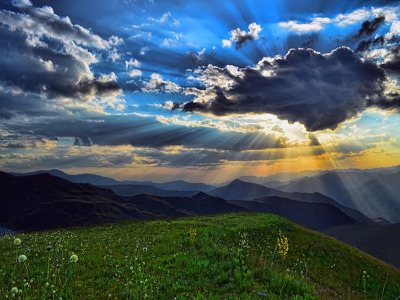A cloud is made out of miniature liquid droplets, frozen crystals, or other particles that are in the atmosphere, and if they form all together into a bigger mass, they are visible to us on the ground. Clouds are formed because of the saturated air when it reaches its dew point. You can see the clouds in Earth’s homosphere. Homosphere is a layer of atmosphere, in this layer, different gases are mixed together due to the turbulence. The hemosphere also includes the troposphere, stratosphere, and mesosphere. The science of clouds is called nephology. Different types of clouds also have names. The names are given after the layers of the homosphere, they have Latin and also common names.
For cloud formation, the wind is also needed. Wind occurs when the air moves on the Earth’s ground horizontally. It carries energy that is transferred from the Earth’s surface in the form of sensible and latent heat. Sensible heat is transferred through conduction and convection. Conduction is the transfer of energy within a substance, while convection is the transfer of energy through the vertical movement of the heated substance. Latent heat is the transfer of energy by changing the substance itself. For example, water can exist as a liquid, gas, or solid. The transformation from liquid to gas is called evaporation, and the reverse process from gas to liquid is called condensation. When water changes from liquid to solid, it is known as solidification or freezing. When it changes from solid to liquid, it is called melting. Water can also directly change from solid to gas through sublimation or from gas to solid through deposition. These different processes are involved in the formation of clouds.
Clouds can form in two different ways, but first the water vapor in the air has to reach its saturation position. The first way is when moisture builds up until it reaches the maximum amount that the air can hold. The second way is by reducing the temperature of the air that is already filled with moisture, which then decreases the amount of moisture it can hold. Saturation is achieved through evaporation and condensation. When saturation happens, the moisture becomes visible in the form of water droplets, which we see as fog and clouds. Between fog and cloud, there is only one difference: the altitude. Clouds can also form when wind blows into the side of a mountain and then the air is forced to go upwards. The clouds can also form when the pressure in the surrounding area is lower, and because of that, the air is forced to move upward.
There are many types of clouds. They get their name based on their shape and, as already mentioned, their altitude in the sky. You may have noticed that some clouds are really big and fluffy, while others are really thin. Some clouds are really close to the Earth’s surface, and others are way up in the troposphere. Most of the clouds are divided into three croups: high, middle, and low. High clouds are between 5 and 13 km from the ground. The most common high clouds are called Cirrus, Cirrocumulus, and Cirrostratus. The middle clouds are between 2 and 7 km from the ground. The most common middle clouds are Altocumulus and Altostratus. Low clouds are from the ground up to two kilometers. Low clouds are Stratus, Stratocumulus, and Nimbostratus. Clouds with vertical growth start from the ground, and they can go up to 13 km. They are called Cumulus and Cumulonimbus. There are also clouds that form in unique ways and are not groped by their height, these clouds are called Lenticular, Kelvin-Helmholtz, and Mammatus. There are also the clouds that are left in the sky by aircraft.
In conclusion, all the clouds are formed because the water vapor in the sky reaches the dew point. At one point, the water droplets get so big that they reach the ground as rain. There are many different types of clouds in the sky, and knowing the cloud types also helps you predict the weather.

Sources:
https://en.wikipedia.org/wiki/Cloud
https://www.weather.gov/source/zhu/ZHU_Training_Page/clouds/cloud_development/clouds.htm
https://scied.ucar.edu/learning-zone/clouds/how-clouds-form
https://scied.ucar.edu/learning-zone/clouds/cloud-types
